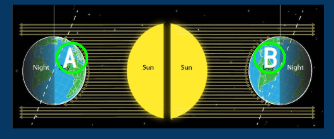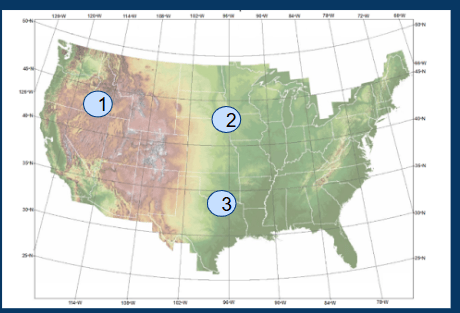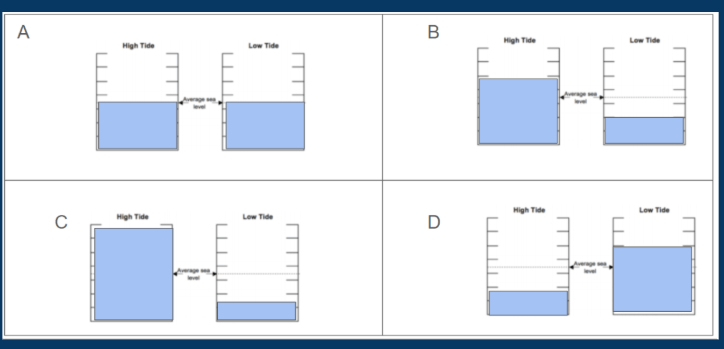What are the motions of the earth?
Rotation & Revolution
True or False: Latitude lines run vertical.
FALSE
What is the main reason Earth has seasons?
Earth's axis is tilted.
Which moon phase is this ?
?
First Quarter
As the distance between two objects increases, gravity…
Decreases
Name the planets in order from closest to farthest from the sun.
Mercury, Venus, Earth, Mars, Jupiter, Saturn, Uranus, Neptune
What is the shape of the Earth's orbit?
Ellipse
Longitude lines run parallel to what?
The Prime Meridian
 When is the northern hemisphere experiencing summer?
When is the northern hemisphere experiencing summer?
What side of the Moon is illuminated when the Moon is waning?
Left side

True or false: The two factors that impact gravity are weight and distance
False
Which planet takes the longest to revolve? Why?
Neptune, farthest from the sun
Why do we always see the same side of the moon?
The moon rotates and revolves at the same rate.
Why is it colder the further North or South you move from the equator?
Less direct sunlight
Explain how the Earth is positioned when it is winter.
Tilted away from the sun.
How are the sun, moon, and earth aligned during a solar eclipse?
Moon is in between sun and earth (new moon phase)
During what moon phases do we get neap tides?
1st and 3rd quarter
Mercury is the closest planet to the sun and almost no atmosphere. What would that mean for its temperature?
Big range (hot during day, loses all its heat at night)
Explain the difference between rotation and revolution.
Rotation is something spinning on its axis, revolving is an object orbiting another object.
Which two locations will have the most similar temperature?
1 and 2.
Why does Earth's revolution play a role in seasons?
Changed which hemisphere is tilted towards or away from the Sun.
Name the moon phases in order, starting and ending at new moon.
New moon, waxing crescent, 1st quarter, waxing gibbous, full moon, waning gibbous, 3rd quarter, waning crescent, new moon
Define spring tide.
The sun, moon, and earth are in line with each other. The combined gravitational pull of the sun and moon make high tides higher and low tides lower than normal.
Why do outer planets have more moons?
More massive, more gravitational pull
Explain how we get day and night on Earth.
Earth's rotation: facing the sun is day time, facing away is night time.
Which place would be the warmest?
Location 3
Name one country that is experiencing summer while the U.S. is experiencing winter.
Answers will vary. Anywhere in the Southern Hemisphere.
Most predicted answer: Australia.
Why do we see different phases of the moon from earth?
We see different amounts of the sunlit half of the moon depending on where the moon is in its revolution
Which of the following pictures represents the water levels during a neap tide?

B
Contrast the temperature, composition, and size of inner and outer planets.
Inner planets are warmer
Inner planets are rocky, Outer planets are gaseous
Outer planets are bigger